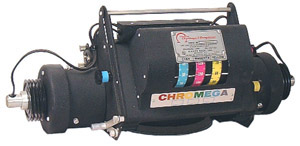x-ray
Veteran
+1
Note that the Schneider recommended in the "Componon" series (all vowels are "o"s). There are also "Componar" and "Companon" lens series as well. The "Componar" series are less desirable though still good. The "Companon" series are excellent, but are special purpose lenses not usually appropriate for traditional darkroom enlarger use.
Be sure the lens chosen covers the intended negative format. In general:
35mm = 50mm lens
6x4.5-6.6 = 75-80mm lens
6x7-6x9 = 90-105mm lens
4x5 = 135-150mm
There have been a few 80mm lenses that cover 6x7 well, but this is not always the case.
I think you were meaning the comparon which is for intermediate enlargement ration. Can't remember the ratios but they are superb.
The componar is the economy grade as you mention and much better than voss. Sigor and other cheap lenses. The comparon was designed for high performance at intermediate ratios and quite good ant the componon was the top of the line. It was replaced by the Componon S which is an updated version.
The componar is Tessar formula as is the comparon. The Componon and Componon S are plasmat 6 element I. 4 groups.
Many cheap lenses like Voss are triplets in cheap plastic mounts and are reay bad as a rule. About all they are good for Imo is a hand magnifier to look at your negs with.
I would highly recommend any of the lenses I previously mentioned. You can't go wrong with the EL Nikkor, Componon, Rodagon or Fujinon EX. The Fujinon lenses are rare but from experience are possibly the best Ive ever used. I currently EL Nikkors in 50, 80, 100 and 150 on my D5 and use a Schneider Componon S 150 and Schneider 210 G Claron on my Durst. The G Claron is a very high resolution Apo process lens designed for reproduction on a process camera. It has virtually no distortion or aberrations and has a very flat field. Process lenses are excellent for enlarging but rarely are found in short focal lengths. I used a 240mm G Claron for 8x10 enlarging for many rears.



